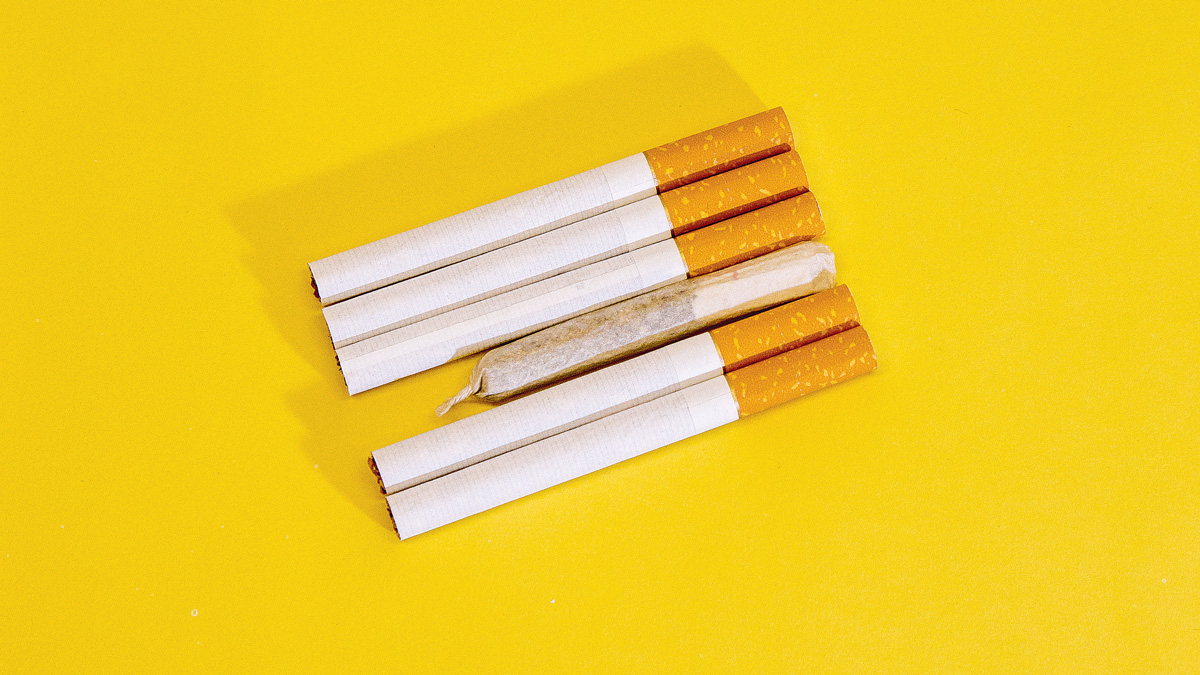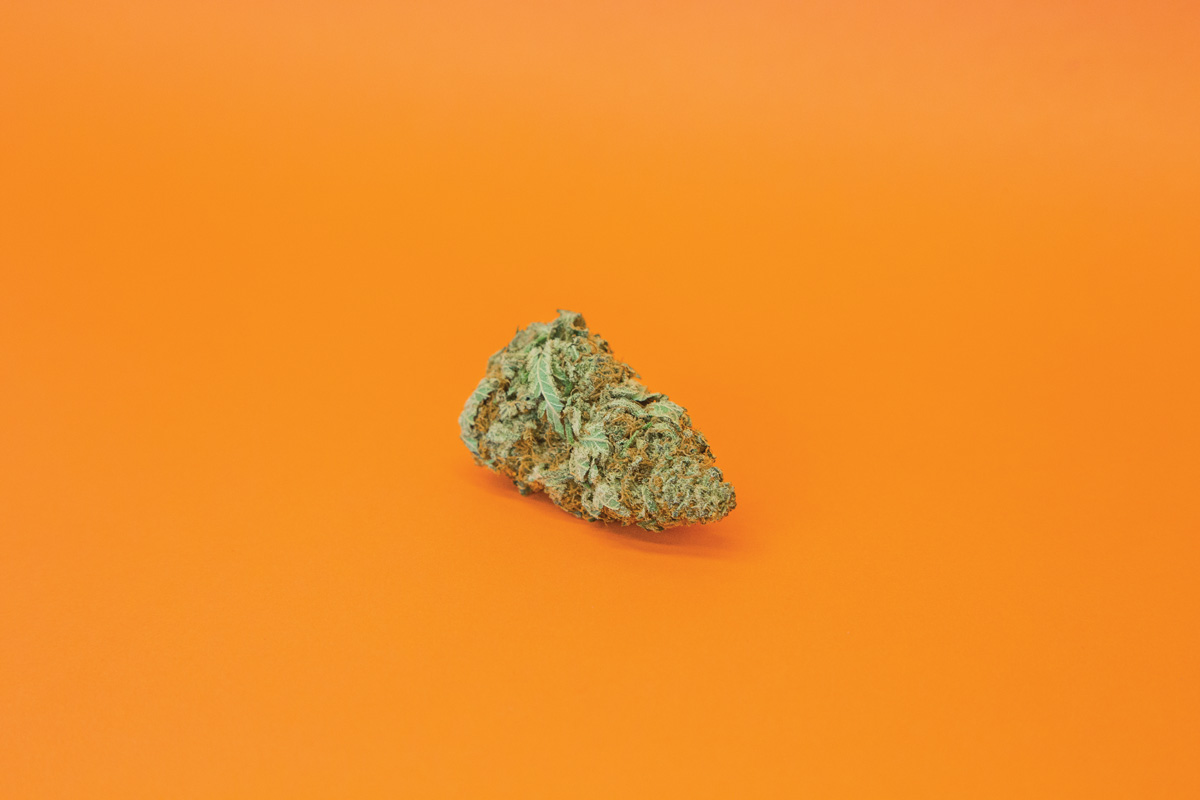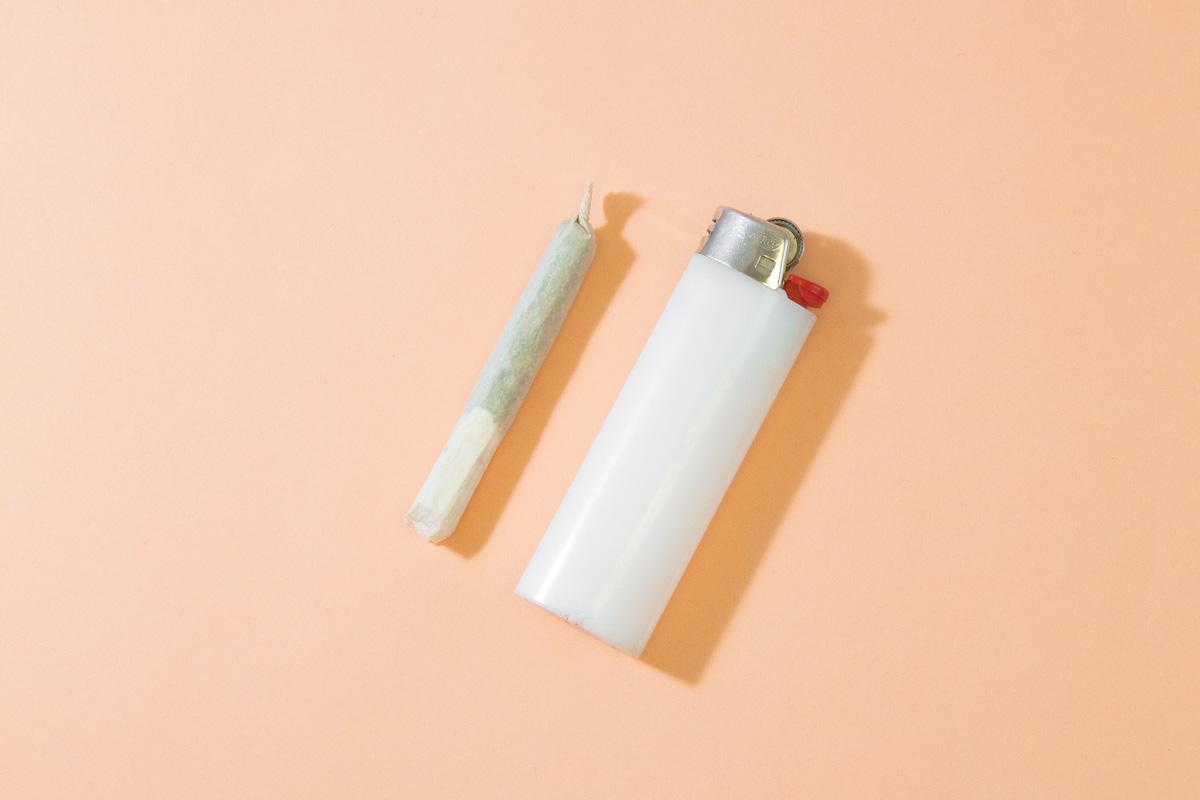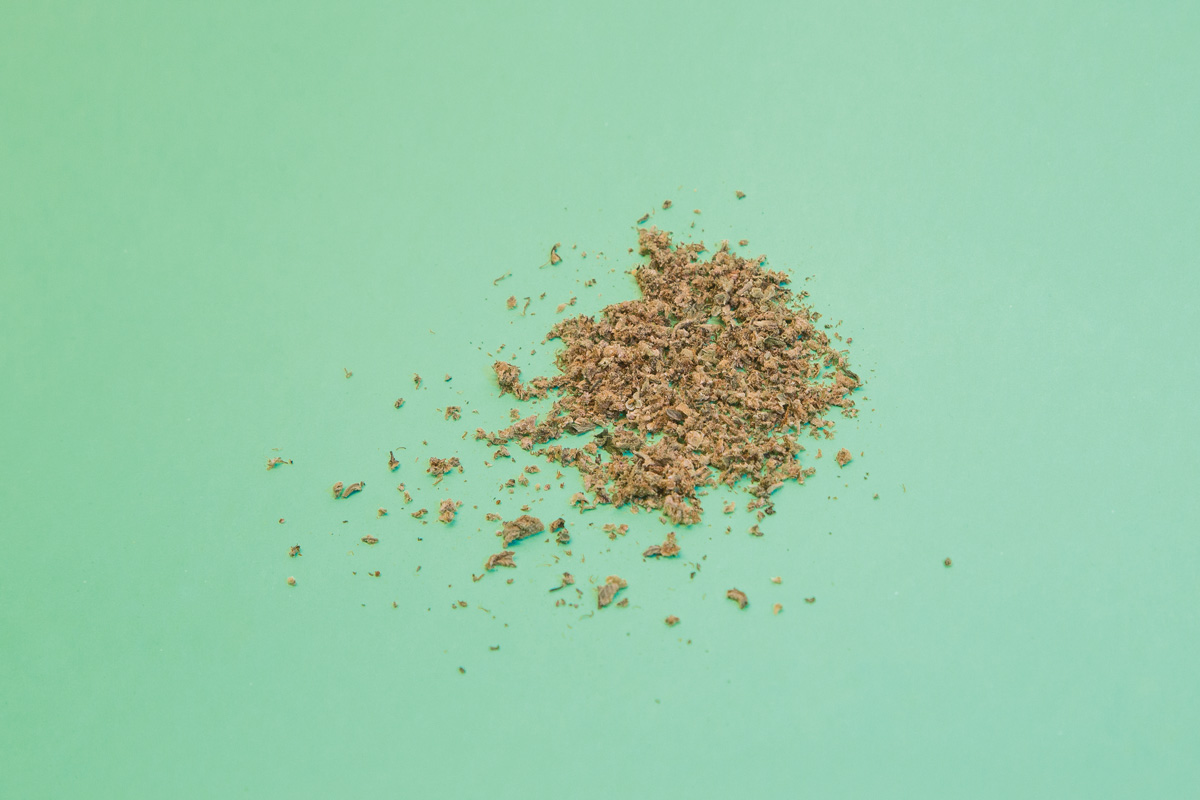Your doctor’s right: you’re too young to smoke weed
 Joshua Storie and Adaire Beatty
Joshua Storie and Adaire BeattyDoctors are right: you shouldn’t be smoking weed at 18.
This past summer, the Canadian government ran a public consultation survey regarding the legalization of marijuana. Some 30,000 people participated in the online questionnaire — one of the most answered surveys our country has ever had, second only to a 2014 survey on prostitution with over 31,000 respondents. The turnout is impressive but unsurprising: Canadians care about weed. The Liberals campaigned heavily on its legalization in 2015, and are poised to deliver on their promises this coming year. But not everyone is approaching Trudeau’s stance on the devil’s lettuce with completely open arms.
Back in September, the Canadian Medical Association (CMA) released a report with a multitude of recommendations on marijuana legalization. These include establishing a tightly-regulated production system, restricting THC content, and setting a minimum purchase age of 21 with restrictions until age 25. As might have been expected, this last proposition was not received particularly well. A slew of opinion pieces and enraged comment threads erupted, some arguing for the minimal harm of marijuana use compared to the benefits of its legalization, others calling the CMA “Big Pharma’s little bitch.”
In any case, many were left wondering what the hell the CMA were thinking. But is the vitriol justified? In order to see where the CMA is coming from, one has to consider two particularly important medical arguments against marijuana use: marijuana’s links to mental illness and its implication in other health concerns. As a counterpoint, it is also necessary to discuss why it might be wise to go against the CMA’s suggestions, their scientific validity notwithstanding. As an extension of that, it is also helpful to consider whether the Trudeau government’s decision-making on the legalization of magic cabbage will even have any serious scientific basis — medical, psychological, or sociological.
“There are a lot of factors that go into the question of legalizing (recreational) marijuana, but if you just look at it from the medical standpoint, 24 would probably be the right (minimum) age,” says Dr. Sefi Kronenburg, Professor of Psychiatry at the University of Toronto and staff psychiatrist at Toronto’s Hospital for Sick Children and Youthdale Treatment Centres. Psychiatrists, especially those such as Dr. Kronenberg that work with pediatric and adolescent patients, are major stakeholders in the discussion on legalization. Dr. Kronenberg’s opinion is based on a growing scientific literature that links marijuana use in younger people to a number of mental illnesses, including psychosis.

Studies over the past two decades have shown that people with psychosis are more likely to use cannabis, and individuals suffering from schizophrenia experience more psychotic symptoms when using cannabis. Cannabis is implicated in relapses and exacerbations of schizophrenia, and discontinuing cannabis use improves such symptoms. Even more concerning is the effect of heavy cannabis use on those without schizophrenia or a predisposition to psychosis; a review of longitudinal studies out of the University of Bristol concluded that “epidemiologic studies provide strong enough evidence to warrant a public health message that cannabis use can increase the risk of psychotic disorders.” In fact, your chances of developing a psychotic disorder in adolescence double if you’re a chronic coral reefer. This risk goes up even more considerably for those with a genetic predisposition towards psychosis, those with a history of psychological trauma, and those who use more potent strains of cannabis on a regular basis.
Furthermore, to consider a particular biopsychological hypothesis, a 2009 review by University of Seville researchers concluded that there is a plausible link between the brain’s endocannabinoid system and schizophrenia. To put it simply, your brain has naturally occurring “marijuana”— endocannabinoids — and receptors to which these bind. When you have a predisposition towards schizophrenia, the balance of this system can go out of whack, which can lead to the psychotic symptoms of schizophrenia. Luckily, it appears that your body also has a defence mechanism against this sort of dysregulation, in that it can flood your brain with more endocannabinoids to restore balance. The problem with partaking in some jazz cigarettes when you have this sort of predisposition is that external cannabinoids — weed — will prevent this defence mechanism from keeping your endocannabinoid system balanced, which can have lifelong consequences. These consequences are especially profound for the age range under discussion.
“There is a lot of data coming from neurology and psychiatry that the age when adolescence ends is not 18, but actually around 24. And the risks … of marijuana are much higher in the developing brain than in the developed brain,” explains Dr. Kronenberg. There are several ways to explain these differences in risk.
Schizophrenia, like most mental illnesses, rears its unfortunate head in the pre-adolescent or adolescent phases of development. That is, your risk of developing schizophrenia decreases significantly after your late twenties. Moreover, prognosis for late-onset psychotic illnesses often looks better than that of earlier diagnoses. This is because brain development is in many ways completed by age 25, as well as the development of your personality, social circles, education, and other so-called “life reserves.” These established factors can make coping with a psychotic episode easier for an adult than for a first-year university student. Conversely, having a predisposition towards psychosis and smoking weed before the end of adolescence has the potential to negate all these benefits by expediting the onset of schizophrenia. That is why Dr. Kronenberg would have liked “to see the age set a little higher (than 21) … around 24. That would be in agreement with the literature.”

Aside from marijuana’s close relationship with psychosis, its use by adolescents has other mental health consequences — though none are quite as consistently shown. There is a growing body of research that associates early and regular marijuana use with depression, anxiety, and suicidal ideation. A 2004 review published by researchers out of Yale University and the University of Sydney also found that adolescent marijuana use was a predictor of major depressive disorder, potentially quadrupling the risk of developing it later on in life. It concluded that “if marijuana use increases suicidal behaviour, this is more likely to occur during adolescence.” What is particularly troubling about these findings is that marijuana is often touted as a “natural” remedy for many of these aforementioned disorders. In a striking real-world application of this mentality, Dr. Kronenberg’s marijuana-using patients are “typically kids with some level of depression, anxiety, and ADHD, usually with some sort of psychosocial difficulties — maybe academic difficulties, difficulties in peer relationships, difficulties at home … they use marijuana a lot of the time as an escape, as self-medication … as a way to mask depression and anxiety.” When asked if this self-medication could put youth at risk for further complications, Dr. Kronenberg was quick to respond: “definitely.”
To bluntly summarize the discussion on marijuana, mental illness, and adolescence, then, one could say that cannabis has the capacity to “break” things in your brain, and it’s a lot easier to knock down something that’s under construction than to demolish something that’s been standing strong for years.
Following that, the next step in considering the perspective of the CMA would be to look past mental illness, towards the general health concerns of an 18-year-old smoking weed. “Health” here implies both physical and social well-being, neither of which is left untouched by early marijuana use. A recent report by the Society for the Study of Addiction (SSA) examined the possible social implications of marijuana for adolescents, which include lower education outcomes, a greater likelihood to use other illicit drugs (the “gateway drug” narrative, dead horse beaten as it was in the War on Drugs, does still hold statistical weight), and marijuana abuse and addiction. This last one contradicts a common myth: that marijuana isn’t addictive.
To Dr. Kronenberg, this belief is not only false, but also dangerous. “I think that this myth (exists) mostly because … symptoms of addiction and withdrawal are clearly more problematic when it comes to alcohol and opiates, and because of that, they have over the years overshadowed to some degree the problems of addiction and withdrawal of marijuana.” Despite this, these effects do exist, though they play out differently than in opiate or alcohol addiction. For one, marijuana addiction is far more psychological than it is physical — which, of course, does not make it any less real. The previously mentioned report by the SSA found that some one in six individuals who started cannabis use in adolescence will develop a dependency disorder. This is up from one in 10 dependents for those who started in adulthood, a finding for which there are several explanations.

One of these explanations will likely leave a bitter taste in the mouths of most youth, but it is undoubtedly integral in this discussion. It is the matter of young peoples’ decreased judgment, poor foresight, and proclivity for risk-taking activities. As students in our late teens and early twenties, we like to think of ourselves as pretty rational, and it’s true, we are — but not nearly as rational as we’ll be in half a decade. The frontal lobe of our brains, the area responsible for decision-making, responsibility, and risk-evaluation, completes development around age 25.
Given all these discussions of mental, physical, and social health, it is easy to start viewing the issue of legalization only through the lens of medical science. However, if the medical perspective were the only one being considered, there would probably be no discussion on the legalization of recreational marijuana in the first place; the majority of the benefits of the legalization lie outside medicine. This is really where the crux of the matter lies: given all the aforementioned risks, it effectively becomes absurd to deliver the sort of vitriol upon the CMA as was done following their recommendations. In presenting those propositions, they did exactly what was expected of them: they provided the medical perspective.
The fact is that this perspective is that of only one stakeholder in the remarkably complex issue of legalization. There are myriad sociological, criminological, and economic reasons to make marijuana as available as possible — you’ve likely heard many of them, such as reducing the strain on the penal system from possession charges, as well as greatly reducing vital income to organized crime. It is perfectly possible that these reasons outweigh the potential harms of higher rates of adolescent marijuana use, but to quantify these harms against the possible benefits is unfeasible. The issue is far too complex, and any decision would likely leave a certain party unsatisfied. Even Dr. Kronenberg, with his 24-or-older approach, concedes that “Overall, there is more on the weight of legalizing it, in terms of the … benefits on society. Having said that, this is not a clear-cut thing … I am not rejoicing this being legalized.”
But what if all these discussions of research and statistics, whether they support the medical perspective or otherwise, are ultimately meaningless? The issue of marijuana legalization is above all one built on politics, and, more specifically, a political platform. The Liberals campaigned on it, and they have consistently brandished it as symbolic of their progressiveness. But the Liberals, being the pseudo-progressives that they’ve shown themselves to be — their shakiness on electoral reform, aboriginal rights, and environmental concerns being clear indicators of this — may not actually be looking at facts when they make their decision next year. Instead, they may well be looking at getting re-elected.
Such an assertion isn’t absurd given that Canadians aged 18 to 25 turned out to vote in far greater numbers in 2015 than in past elections, and gave more votes to the Liberals than to any other party. It’s this age group that is also most concerned by legalization, given the World Health Organization’s finding that Canadian youth smoke more weed than their peers in any other developed country. The conclusion that logically follows is that marijuana legalization is closely tied to the youth vote, and excluding voters aged 18-20 from marijuana use as per the CMA’s suggestions could deal the Liberals a heavy blow in the next election. This effect would be even more profound if policymakers were to follow Dr. Kronenberg’s suggested minimum age of 24.
So when it comes to marijuana legalization’s place as a major political calling card, it may so happen that 2017 will see a mirror image of the Conservatives’ years of making drug policy decisions without any particular appeals to medical or sociological science. The only difference is that, unlike the Conservatives who rejected rationality in a bid to parallel the moral compasses of their right-wing voters, the Liberals may reject rationality in an act of centrist popularism.
The admittedly depressing political aspect of marijuana legalization aside, this is a discussion that is staggeringly multi-faceted. On one hand, there is a breadth of research that links marijuana to mental, physical, and social ills. On the other, it is not hard to think of a plethora of reasons to set aside that medical research in the name of greater benefits.
“The devil’s in the details,” concludes Dr. Kronenberg. “I think if you look at it in terms of ‘Is it better for this to be legal?’ in the sense that there will be fewer arrests for usage of marijuana, there will be less crime related to marijuana — that will definitely be something that will benefit society.” But it is the minutia of legalization, such as a simple number between 18 and 25, that will come to define the decision as either an overall success or failure.





Great article! Especially important that it is written by such a young person. Very informative and thought provoking. Very mature view of the subject.
Age should be at least 21. 25 is better but it won’t work due to so many other factors. Most of my friends that have smoked since they were teens had their lives impacted and were always less motivated to work hard to become successful and most never finished university. That being said, we live in Canada and if people want to smoke weed they should be able to and I’m glad we’re moving forward with legalizing, reality is people that want to smoke can always find weed anytime and probably cheaper illegally anyways if they wanted to.